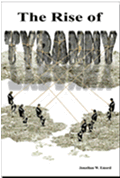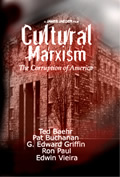NINE MYTHS FROM THE CONVENTION OF STATES PROJECT
 By
Judi Caler
By
Judi Caler
August 25, 2015
NewsWithViews.com
Rita Dunaway, staff counsel for the Convention of States Project (COS), wrote an article,
Five Myths about Article Five, which turns the Constitution on its ear. Ironically, her article challenges five premises that are true, while invoking at least 9 myths of her own.
In fact, the very name “convention of states,” is being used by Article V convention advocates to deceive state legislators into thinking an Article V convention can be controlled by state legislatures; it cannot.
Rita’s Myth #1: A “convention of states” is the only “medicine that can cure the disease of federal overreach…”
False: What did our Founders really say we must do when the federal government usurps power? They never said, “When the federal government ignores the Constitution, amend the Constitution.” Instead, in addition to electing faithful representatives, they advised Nullification.
“Where powers are assumed which have not been delegated, a nullification of the act is the rightful remedy.” – Thomas Jefferson; Kentucky Resolutions, 1798
According to the Tenth Amendment Center, “Nullification is any act, or set of actions, that results in a particular law being rendered null, void or even just unenforceable within a particular area.” Nullification applies only to unconstitutional acts of the federal government – to usurpations of powers not delegated.
States, local governments, your County Sheriff or even The People can follow the advice of James Madison and refuse to comply with unconstitutional federal laws right now, without risking our Constitution through a convention. In fact, there were over 200 bills introduced less than one month into the 2015 state legislative season to do just that.
Rita’s Myth #2: The purpose of Article V is to protect The States and The People from an overreaching federal government.
False: Amendments are meant to correct errors, not to protect The People from an overreaching federal government. Alexander Hamilton at the constitutional convention on September 10, 1787 pointed out that amendments remedy defects in the Constitution. And he tells us in Federalist No. 85 (paragraph 13) that useful amendments would address the “organization of the government, not…the mass of its powers.”
You cannot “fix” federal usurpations of undelegated powers by amending the Constitution to say the federal government cannot do what the Constitution never gave it the power to do in the first place.
Rita’s Myth #3: The reason the drafters added the convention method of proposing amendments to Article V was to give the states a way to bypass Congress.
False: If Article V were meant for states to bypass Congress, it would have bypassed Congress! Article V gives Congress the power to “call” a convention; and Article I, Section 8, last Clause gives Congress the power to make whatever laws are “necessary and proper” to carry out the powers vested by the Constitution, e.g. Article V.
It’s true that George Mason wanted states to be able to make amendments without the assent of Congress and in a manner which did not depend on Congress. However Mason lost on this issue and refused to sign the Constitution.
Rita’s Myth #4: A “convention of states” is different than a “constitutional convention” because of the source of authority of each. The former derives its authority from Article V itself and is limited to proposing amendments to the Constitution we have; whereas at the constitutional convention of 1787, The States gathered pursuant to their residual powers as individual sovereigns.
False: The only convention for proposing amendments is one called by Congress. And Congress has total power to organize and set it up. But once the delegates assemble, they are the sovereign representatives of The People, as expressed in the Declaration of Independence (paragraph 2) and have the right to alter or abolish our form of government and institute a new one.
Advocacy groups are using semantics to change the meaning of the term “constitutional convention.” According to Black’s Law Dictionary, a “constitutional convention” is defined as “a duly constituted assembly of delegates or representatives of The People of a state or nation for the purpose of framing, revising, or amending its constitution.”
COS cannot have it both ways. They cannot proclaim the enormous power of an Article V convention to take back our government; and, at the same time, rein in delegates and deny their sovereignty.
Rita’s Myth #5: We know how an Article V convention would operate.
False: Neither COS nor anyone else can guarantee what will happen at an Article V Convention. There are no precedents. With our Constitution at risk, are we to assume 200-year-old “customs” in conventions between a few states would prevail?
Proof that there are no rules for operating an Article V convention is that various organizations of state legislators, including the Assembly of State Legislatures (ASL) and the American Legislative Exchange Council (ALEC), are working furiously to hammer out rules. However, any finished product of such groups will have the “force” of a suggestion only.
The Congressional Research Service (CRS) Report issued April 11, 2014, [1] confirms that Congress most likely will claim authority over the power to organize and set up an Article V convention. Because of lack of precedent and so many unknowns, the CRS Report suggests on page 27 that they’ll have to call a convention to see what sort of convention they’ll get: general, limited or runaway!
Rita’s Myth #6: The reason we haven’t had an Article V convention yet is because there have never been 34 applications requesting a convention on the same topic.
False: This is speculation. Since Congress is given the power to “call” a convention, Congress decides how to count the applications. The hundreds of applications sent in thus far may not have met Congress’s criteria in terms of wording, timing, or any number of factors; or perhaps Congress has resisted calling a convention for reasons of its own.
Rita’s Myth #7: A limitation on the topic is necessary in order for state legislatures to provide instructions to the delegates.
False: There is nothing in Article V that calls for instructions to delegates. Since delegates can do whatever they want once the convention is convened, delegate instructions serve only as a gimmick to secure legislators’ votes on applications by giving them a false sense of security in thinking they can control what is totally out of their hands.
Rita’s Myth #8: Topics for an Article V convention can be limited so that convention delegates cannot re-write the entire Constitution once they assemble.
False: The delegates who represent “We the People” have the inherent right, as expressed in the Declaration of Independence, to alter or abolish the Constitution and disregard any limitation placed on them by state legislatures, Congress, or anyone else. This is what happened at the constitutional convention of 1787 which was called by the Continental Congress for the sole purpose of amending the Articles of Confederation. The result was a new Constitution with a new mode of ratification. There is nothing to prevent that from happening today.
Rita’s Myth #9: There are adequate safeguards in place to assure state legislators are in control of a convention, e.g. topic limitations, the ability to recall delegates, and the ultimate safeguard which requires 38 states to ratify any ill-conceived or illegitimately advocated proposal.
False: Delegates to an Article V convention would have more power than the federal or state governments and cannot be controlled by state laws. Topic limitations and Delegate recalls may be ignored. Also, Delegates may make their proceedings secret, as they did at the “amendments” convention of 1787, and they may vote by secret ballot. If this happens, States won't know what is going on at the convention. If the States don't know what is going on at the convention, then how will they determine whether to recall their Delegates or criminally prosecute Delegates who “violate their oaths” to obey the instructions of their states?
Furthermore, the ratification process may be changed. The Articles of Confederation required all of The States and the Continental Congress to ratify amendments. Nevertheless, the framers wrote a new Constitution with a ratification requirement of only 9 states (3/4 of those present). One Constitution waiting in the wings for a convention to be called would establish a dictatorship and require ratification by a referendum called by the President!
|
|
The only guarantee of power state legislatures have in the Article V convention process is to apply for a convention. Legislators are being duped by Article V convention advocates into believing they can necessarily control the convention rules and the ratification process. Congress controls the “call” and after the convention convenes, the delegates can do whatever they want, including rewrite the Constitution. Does anyone really believe that radical factions with ill-intentions will politely sit on the sidelines and relinquish the opportunity to participate in the demise of our beloved Constitution?
© 2015 Judi Caler – All Rights Reserved
Footnotes:
1. The Article V Convention to Propose Constitutional Amendments: Contemporary Issues for Congress, Thomas H. Neale, April 11, 2014.
Judi
Caler lives in Nevada City, California and is Article V Issues Director
for Eagle Forum of California. She is passionate about holding our
public servants accountable to their oaths to support the Constitution
we have.
E-Mail: judicaler@gmail.com












 Share This Article
Share This Article





